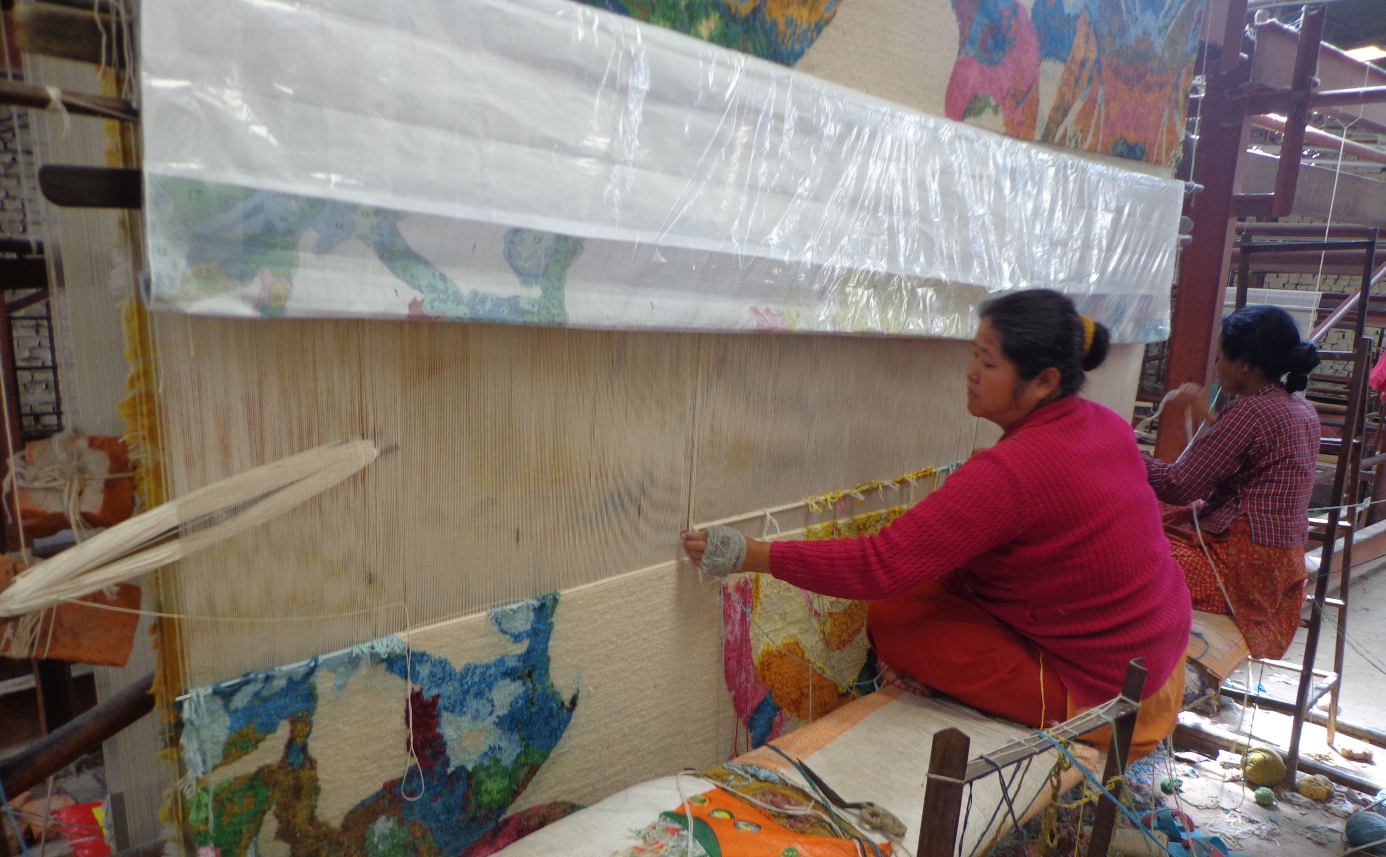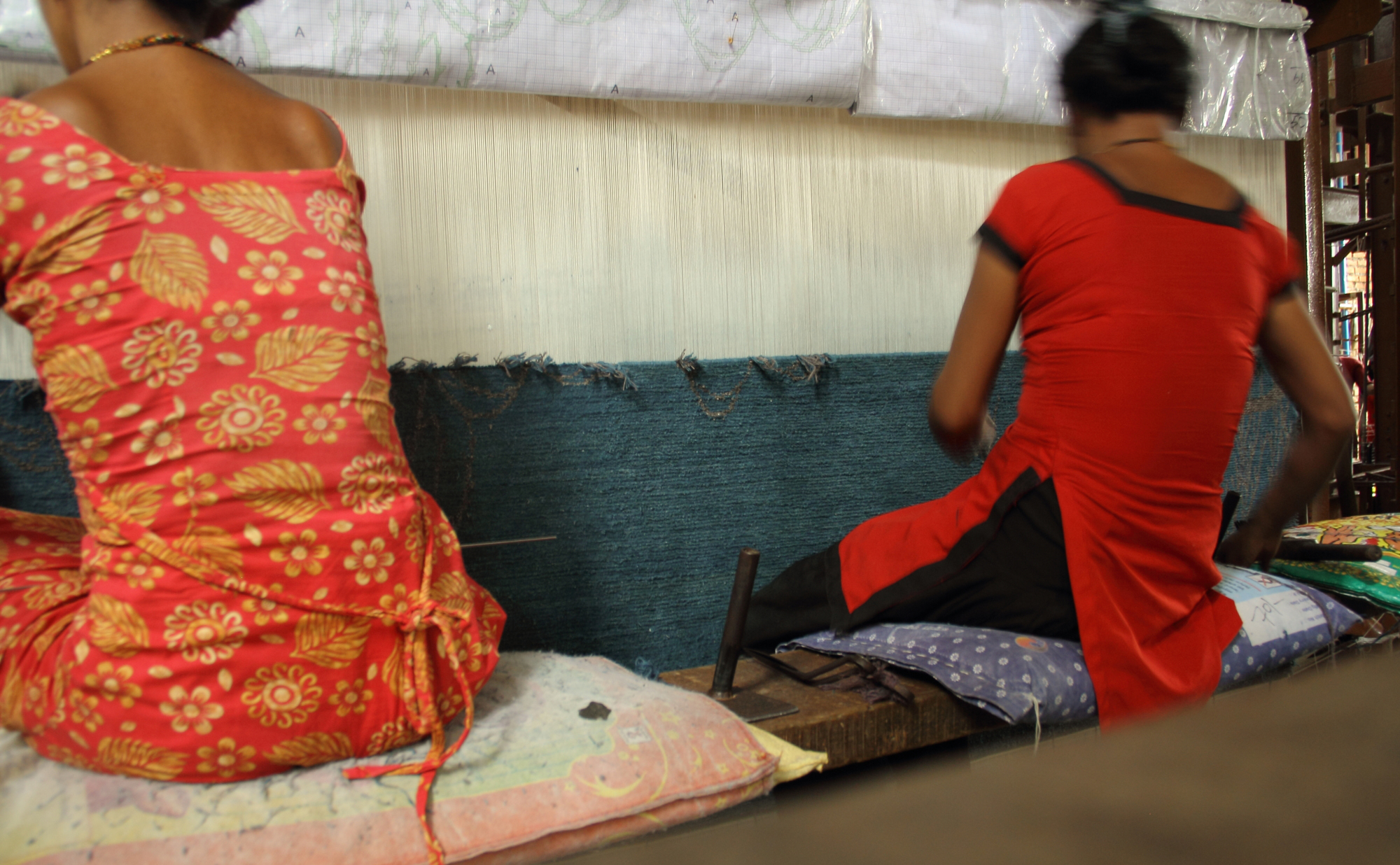In the wake of a series of devastating earthquakes and aftershocks that have literally shaken the very foundation of Nepal, I find myself in an unfamiliar state of mind. Empathy has never been my redeeming quality, yet concern and anxiety occupy my thoughts of a people so far away, so impoverished, so disparate from my western life of relative comfort. How is it, that a Midwestern born, American expat living in rural New Brunswick, Canada can be so distressed about people he has never met? Grand philosophical reasons aside, the simple truth of the matter is that twenty (20) years ago fate and circumstance conspired as it were and I found myself at the beginning of a career, and a love affair, dedicated to modern handmade rugs and carpets and moreover to the best thereof. For those not as well versed, this includes what are arguably the very best carpets in the world: those made in Nepal. I’ve sold countless Nepali made rugs, I’ve written extensively on carpets both as an amateur and a professional, I’ve worked with some of the finest contemporary producers of carpets in the world, I own Nepali made rugs. But this isn’t about me. This is about Nepal and its people, the handmade carpet industry of Nepal, and how imperative it is that we all show real empathy for Nepal.

Do not mistake my assertion to imply that what we’ve done thus far isn’t out of compassion, far from it actually. The global response was swift, the immediate needs of Nepal have been met, and life continues. But our efforts – as they often are – have been reactionary and short term. The modernity of the situation alone limits our attention span. In just a few scant weeks our outpouring of financial and emotional support, our slacktivism of dubious value, and our collective concern have already all but waned into oblivion. Nepal however is going to need more to rebuild, specifically more money, but charity alone is not the answer. In its stead, we can easily provide long-term assistance through patience, true understanding, and our continued (and perhaps increased) handmade carpet business with Nepal. Not only will this allow the Nepali people to help themselves, it will work to preserve and improve one of the few export industries in an otherwise largely agrarian society.
The weaving of handmade carpets in Nepal is a major industry – second only to tourism – providing decent income and skilled jobs to the population. While there is no official data on the industry, which reflects the informal character of the sector, an estimated 30,000 to 50,000 people are currently employed as weavers, producing 461,000 square meters of carpets worth some $64.73 million (USD) in exports for Nepal in 2014. Of this, approximately thirty-nine percent (39%) of the square footage, worth just over half of the value went to consumers in the United States. This means that not only do consumers in the United States buy a lot of Nepali made rugs; they also tend to buy more expensive, higher end, better quality rugs.
Somewhere in the United States, in a condominium tower, in a detached home, in a corporate boardroom, in any place where someone might imagine placing a handmade carpet, the discussion about which carpet is now taking place. The fickle whims of design notwithstanding, in a solid ten percent of those instances, accounting for the figures above, the carpet selected ends up being made in Nepal. But now, after brief and somewhat exhaustive media coverage, consumers have begun to question that decision. To quote anonymously from a friend and rug importer who received the following email: “My client is concerned about how long is this process [of making the rug] is going to take with all [that is] going on in Nepal. Please let me know if it’s possible to cancel this order?”
I don’t know the client, but I know the type. Feigning concern, perhaps even donating to the immediate Nepal relief efforts, but lacking any real compassion beyond their own immediate relatively comfortable existence. And while a potential delay of two to six (2-6) weeks can be a great inconvenience to a client’s plans for whatever home redecoration, family or society function the carpet was wanted for, the toll on the Nepali people transcends mere inconvenience. Every cancelled order, every order not placed because of the perceived uncertainty of delivery, negatively impacts the well being of the weavers of Nepal, and retards the reconstruction effort by removing much needed foreign money from their economy.

As it stands today, various industry sources estimate that between thirty and fifty percent (30-50%) of the weavers in Nepal have left the main carpet producing areas of the Kathmandu Valley, returning to their villages to learn the fate of their homes and loved ones. Every day these weavers aren’t working, they are loosing the entirety of their approximately $4.43 (USD) each in daily wages*. For the inconvenienced client, this is the cost of a Starbuck’s coffee and an infinitesimal percentage of their income, while for the weaver in Nepal, it’s food, it’s building shelter, and for every three days not working, it’s a one percent (1%) decrease in annual income. Will these skilled workers come back to weaving? Only if there is work to be had, only if we keep buying Nepali made rugs and carpets.
If you are currently purchasing a handmade carpet from Nepal but are trepidatious because of possible delays, and are considering cancelling? Don’t. Are you planning on purchasing a handmade carpet now or in the future? Buy one from Nepal. No matter what you may believe to the contrary, cancelling your order or purchase because of delays will only rob the weaver of your carpet of much needed income. Income they need to survive and rebuild their country. The inarguably minor, trivial, and inconsequential inconveniences you may experience by your current and future business are worth more to the long-term recovery of Nepal and its people, than any amount of charity or counterfeit claims of concern. Now is the time when your desire for the best handmade carpet requires just a little more waiting, just a little more patience, just some understanding, and a real show of empathy for Nepal.
*It should be noted that many major importers both in the United States and abroad are currently covering lost wages for their weavers, but this cannot continue indefinitely. Thank you for reading and Good-bye.



